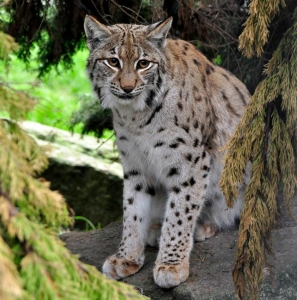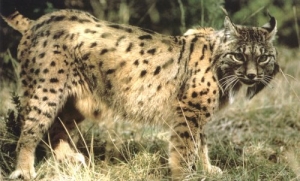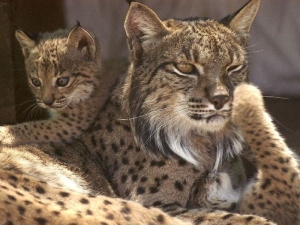This spectacular video of a mother Eurasian Lynx and her two young kittens relaxing at Langedrag Wildlife Park in Norway will melt your heart. We thank Johan Naesje for sending us this touching footage, guaranteed to make any cat lover weak with the extreme cuteness.
Donate Today to Wild Cat Conservation
Wild cats are in danger of disappearing all over the world. ISEC Canada was created as a conservation body totally dedicated to saving the 28 small wild cat species from extinction. One example of a wild cat species in need of your help is the Eurasian Lynx.
The Eurasian Lynx Lynx lynx is the largest lynx species, and has one of the widest ranges of any wild cat. Their fur has a usual ground colour of a yellowish-grey to greyish-brown, with white underparts. The soft, thick pelage is thickest on the back, and can be variably marked with more or less distinct dark spots, and sometimes small stripes. Learn more
100% of donations received go directly to wild cats
The increasing urbanization of western Europe, and the resulting loss of habitat and diminished prey base, have led to a severe reduction of the Eurasian Lynx population there. The first step is to learn about their lives in the native habitat. Where are the cats located? What kind of habitat do they need? What do they eat? How large is the population? These and many other questions must be answered before suitable areas can be set aside and conservation plans put in motion.
Your donations help field researchers purchase radio collars, cameras and other equipment to study the small wild cats.
Thank you for your support!
Celebrating Another Success for the Iberian Lynx Recovery Plan!
A news article on June 27, 2013 from Portugal News Online reported that two Iberian Lynx born last year at the Silves Reproduction Centre in Portugal were recently released in to the Guarrizas Valley in Spain. Eleven of nineteen Iberian Lynx released into the wild so far this year were born at the Algarve-based CNRLI reproduction centre, in Silves. The cat’s first few days of freedom were monitored by radio and satellite.
So far this year 17 cubs have been born at the CNRLI centre in Silves, 15 of which are currently also being taught to live in the wild, in preparation for their release next year.
The Iberian, or Spanish, Lynx is currently the most endangered wild cat species in the world. The situation of the Iberian Lynx is so grave that it is the only felid species in which the costly and risky process of captive breeding and reintroduction is essential. The lynx is threatened by the collapse of its main prey, the European rabbit, whose population now numbers only about 5% of 1950 levels due mainly to the introduction of exotic diseases.




